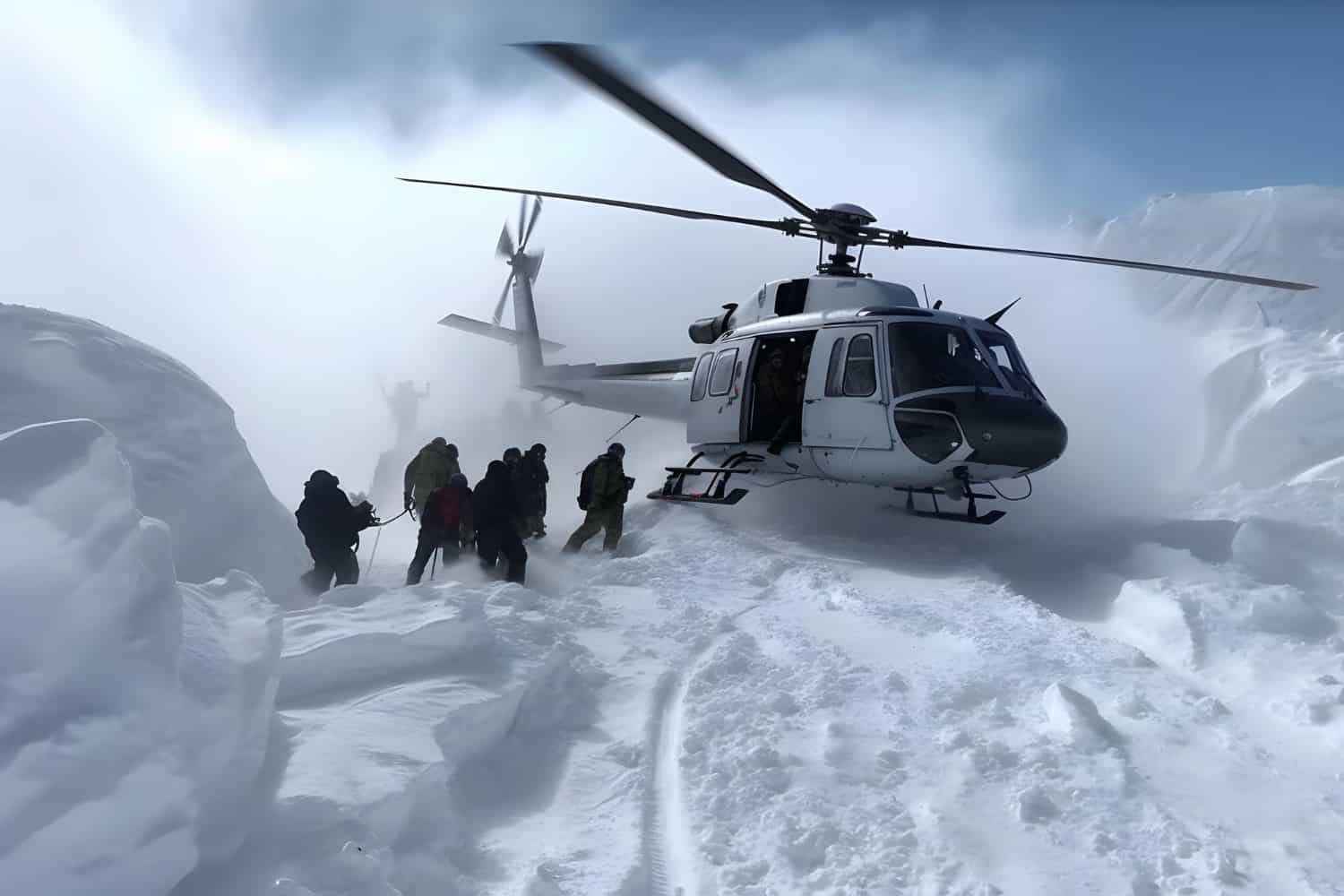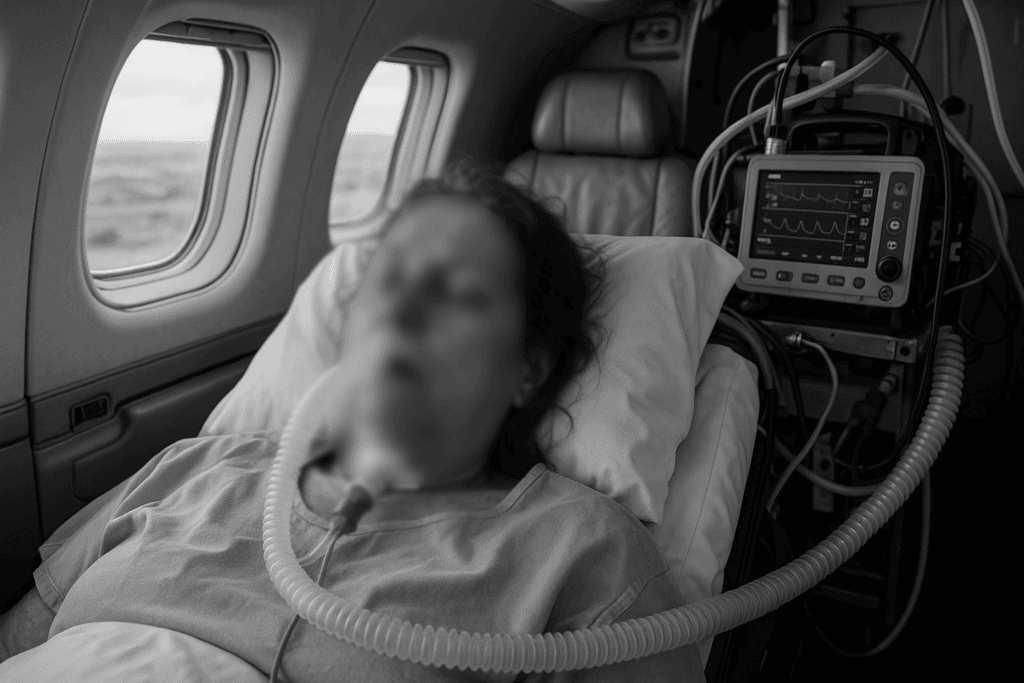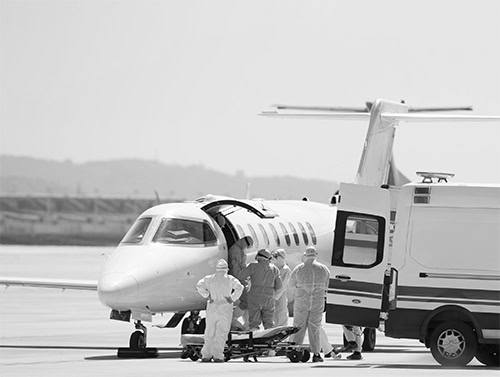Understanding Medical Evacuation: CASEVAC and MEDEVAC
In crisis or conflict situations, medical evacuation is crucial for saving lives and providing timely care. Two distinct procedures, CASEVAC (Casualty Evacuation) and MEDEVAC (Medical Evacuation) are employed during these emergencies.
Often, the terms CASEVAC and MEDEVAC are used interchangeably, but understanding the differences between these terms is crucial for effective communication and coordination during emergencies.
CASEVAC, as the name suggests, refers to the evacuation of casualties, both civilians and military personnel, from battlegrounds or combat zones to medical facilities or trauma centers where they can receive the necessary care. As CASEVAC missions primarily take place in combat zones or battlefields, the aircraft used may be armed military aircraft and requires coordination with military units and security forces to ensure the safety of patients and medical personnel. The primary goal is to transport the injured individuals as quickly as possible to a location where they can receive medical attention. CASEVAC missions are typically conducted by air, employing general-purpose aircraft that may not have dedicated medical equipment on board. The emphasis is on rapid transportation, and the patient may or may not receive medical care during the evacuation and is often conducted by the closest available unit to the injured individual due to the urgency of the situation. CASEVAC flights generally cover short distances, making helicopters the preferred mode of transport due to their ability to land or hover in various terrains, providing flexibility in patient pick-up.
On the other hand, MEDEVAC, short for Medical Evacuation, involves a more organized and planned process. It focuses on transporting patients from the accident scene or another medical facility to a specialized medical facility for further medical care. MEDEVAC missions involve careful planning and coordination to dispatch trained medical personnel to the scene or facility where the patient is located. Purpose-built patient transport vehicles are used, both on the ground and in the air. Unlike CASEVAC, MEDEVAC vehicles and aircraft are equipped with medical equipment and staffed with trained medical professionals to provide en-route care. MEDEVAC air ambulance can involve helicopters, fixed-wing aircraft, or ground ambulances, depending on the circumstances and urgency. MEDEVAC flights can range from medium to long distances, and both helicopters and airplanes can be used to transport patients. The patient being transported during a MEDEVAC mission has often already received some medical attention and is not in immediate life-threatening condition.
CASEVAC operations are not explicitly covered by the Geneva Conventions, leaving their legal protection and specific guidelines undefined. While some level of protection is extended to medical personnel involved in CASEVAC, attacks on CASEVAC vehicles or aircraft may not necessarily be considered war crimes unless they violate broader provisions of the Conventions.
In contrast, MEDEVAC operations are explicitly protected and governed by the Third and Fourth Geneva Conventions. These Conventions outline the rights and protections for the wounded, sick, and medical personnel. MEDEVAC vehicles and aircraft must be clearly marked as non-combat and are not to be targeted by opposing forces.
Medical personnel involved in MEDEVAC operations enjoy explicit protection, including immunity from attack and the freedom to provide medical care without interference. Targeting or engaging clearly marked MEDEVAC vehicles or aircraft is considered a serious violation of the Geneva Conventions and is classified as a war crime.
In sum, while both CASEVAC and MEDEVAC involve transporting injured individuals, they differ in terms of legal protection, clear identification, and provisions for medical personnel. MEDEVAC operations benefit from greater legal safeguards and immunity from attack, ensuring the safety and security of patients and medical personnel involved in the evacuation process. Understanding these distinctions is vital for effective decision-making and coordination during emergencies, ensuring appropriate care for patients during evacuation.
If you have more questions about air medical evacuation procedures, costs, and planning, feel free to write to us at: mail@bluedotassist.com or call/ WhatsApp chat with us at our 24×7 support number +971 551881441



